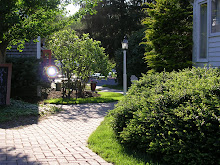OFTEN it is said that the way a space is constructed is less about the building itself, or the process of building, and is more about influencing the behaviors. this notion is emphasized within the sub-field of environmental psychology. it also offers valuable insight into the various remarkable effects an environment can have on individuals.
above are three examples of distinctive yet balanced living spaces
featured in architectural digest magazine
featured in architectural digest magazine
FOLLOWING is one dominant method, common across the design world, used to manipulate a space for psychological purposes. it uses prominent elements to create either harmony and tranquility or energy and tension. also, it is used to emphasize a particular interest or focal point.
balance and symmetry:
THE EFFECTS of balance in a room are relatively intuitive. people often notice when both small and large features of a space are off-balance or out-of-sync. they may feel ill-at-ease, tense, anxious, or agitated.
IN ANCIENT times mirror symmetry was considered the ideal. classical greece, for instance, was renown for its mastery of balance in art. the designs that came of this time and place continue to be highly regarded and praised for the simplicity and perfection.
TODAY, architects, designers, and decorators still seek to achieve ideal balance. also, though, they desire their work to have an energy that is difficult to attain through classical styling alone. thus, it is through both absolute or mirror symmetry as well as more subtle methods that they hope to capture this feeling and to create peace in or through their designs. regardless of the chosen approach, the intended effect is consistent.
symmetrical
traditional balance in which similar objects or features are repeated across a vertical axis, such as in a mirror. perhaps because this is like the symmetry of the human form, it is typically the most natural and comfortable:
above John mark power's blog
asymmetrical
traditional balance in which similar objects or features are repeated across a vertical axis, such as in a mirror. perhaps because this is like the symmetry of the human form, it is typically the most natural and comfortable:

above John mark power's blog
asymmetrical
despite the obvious allure of perfect symmetry, asymmetrical balance is far more common in current design. to achieve it, visual weights are given to dissimilar objects and features before they are placed within the space. while this is more difficult than mirror symmetry, the effect is worthwhile. it creates harmony and unity while maintaining a certain easy energy that feels natural and effortless:

above was featured in metropolitan home magazine

above is a Modern Penthouse in NYC by Joel Sanders Architect
radial symmetry
rather than being achieved through placement of elements over a vertical axis, balance in this case comes by way of arrangement round a center point within a space:


above was featured in metropolitan home magazine

above is a Modern Penthouse in NYC by Joel Sanders Architect
radial symmetry
rather than being achieved through placement of elements over a vertical axis, balance in this case comes by way of arrangement round a center point within a space:

A SPACE can also achieve a maximum psychological impact through structural design features such as angles, borders and edges and openness or spaciousness.








































